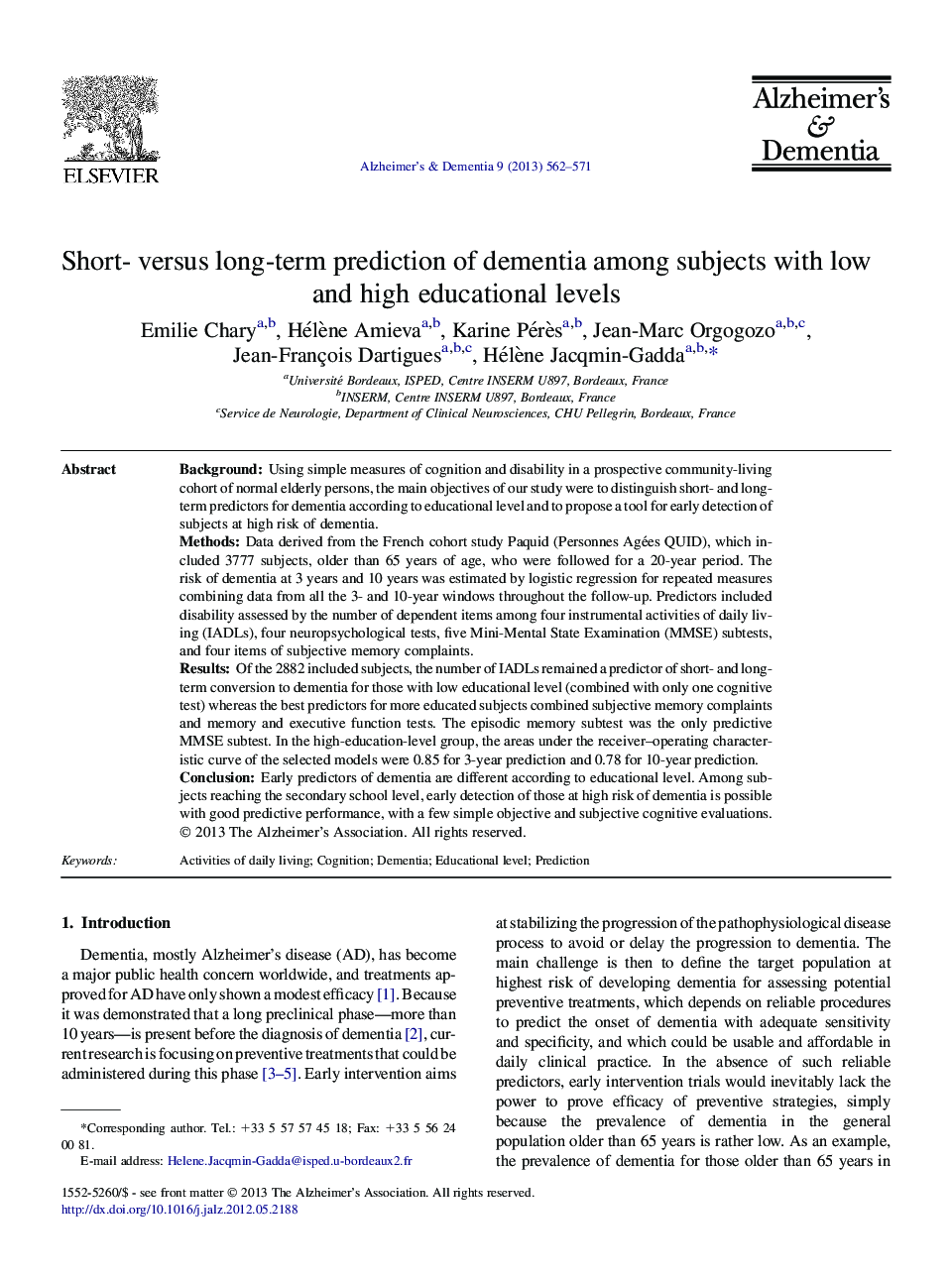| Article ID | Journal | Published Year | Pages | File Type |
|---|---|---|---|---|
| 5623061 | Alzheimer's & Dementia | 2013 | 10 Pages |
BackgroundUsing simple measures of cognition and disability in a prospective community-living cohort of normal elderly persons, the main objectives of our study were to distinguish short- and long-term predictors for dementia according to educational level and to propose a tool for early detection of subjects at high risk of dementia.MethodsData derived from the French cohort study Paquid (Personnes Agées QUID), which included 3777 subjects, older than 65 years of age, who were followed for a 20-year period. The risk of dementia at 3 years and 10 years was estimated by logistic regression for repeated measures combining data from all the 3- and 10-year windows throughout the follow-up. Predictors included disability assessed by the number of dependent items among four instrumental activities of daily living (IADLs), four neuropsychological tests, five Mini-Mental State Examination (MMSE) subtests, and four items of subjective memory complaints.ResultsOf the 2882 included subjects, the number of IADLs remained a predictor of short- and long-term conversion to dementia for those with low educational level (combined with only one cognitive test) whereas the best predictors for more educated subjects combined subjective memory complaints and memory and executive function tests. The episodic memory subtest was the only predictive MMSE subtest. In the high-education-level group, the areas under the receiver-operating characteristic curve of the selected models were 0.85 for 3-year prediction and 0.78 for 10-year prediction.ConclusionEarly predictors of dementia are different according to educational level. Among subjects reaching the secondary school level, early detection of those at high risk of dementia is possible with good predictive performance, with a few simple objective and subjective cognitive evaluations.
